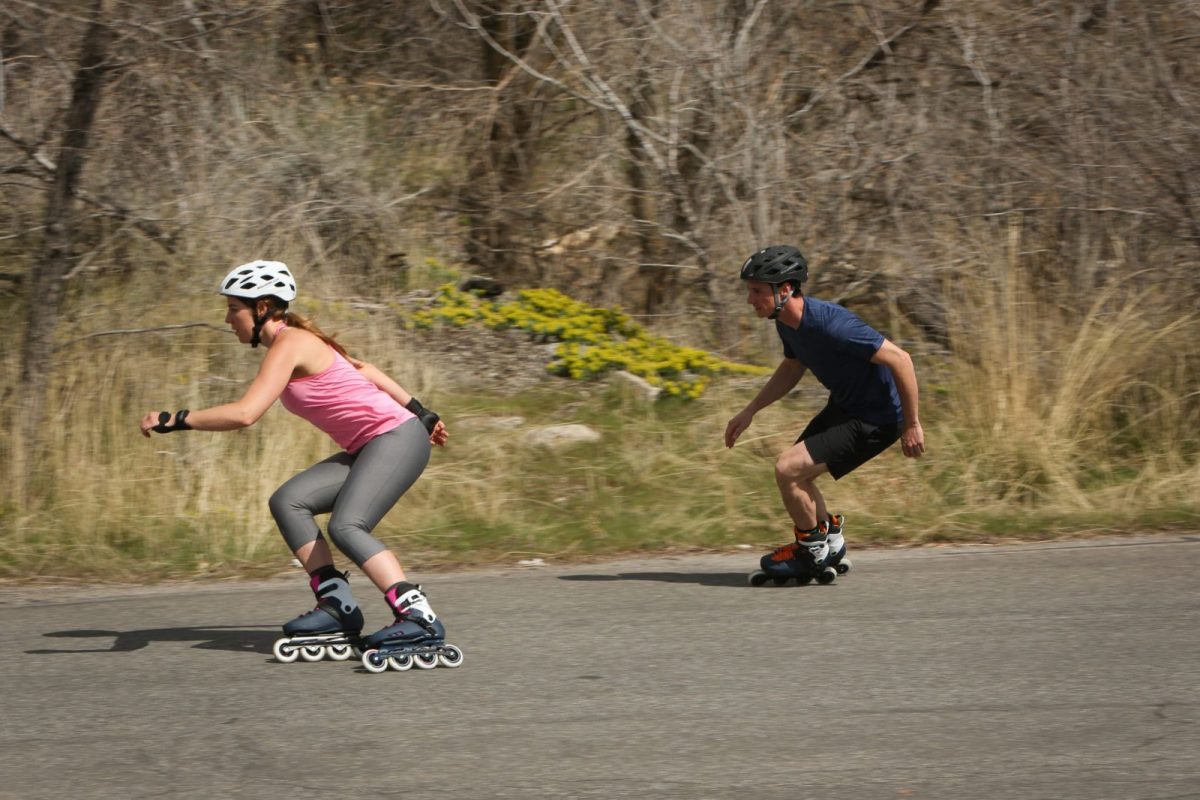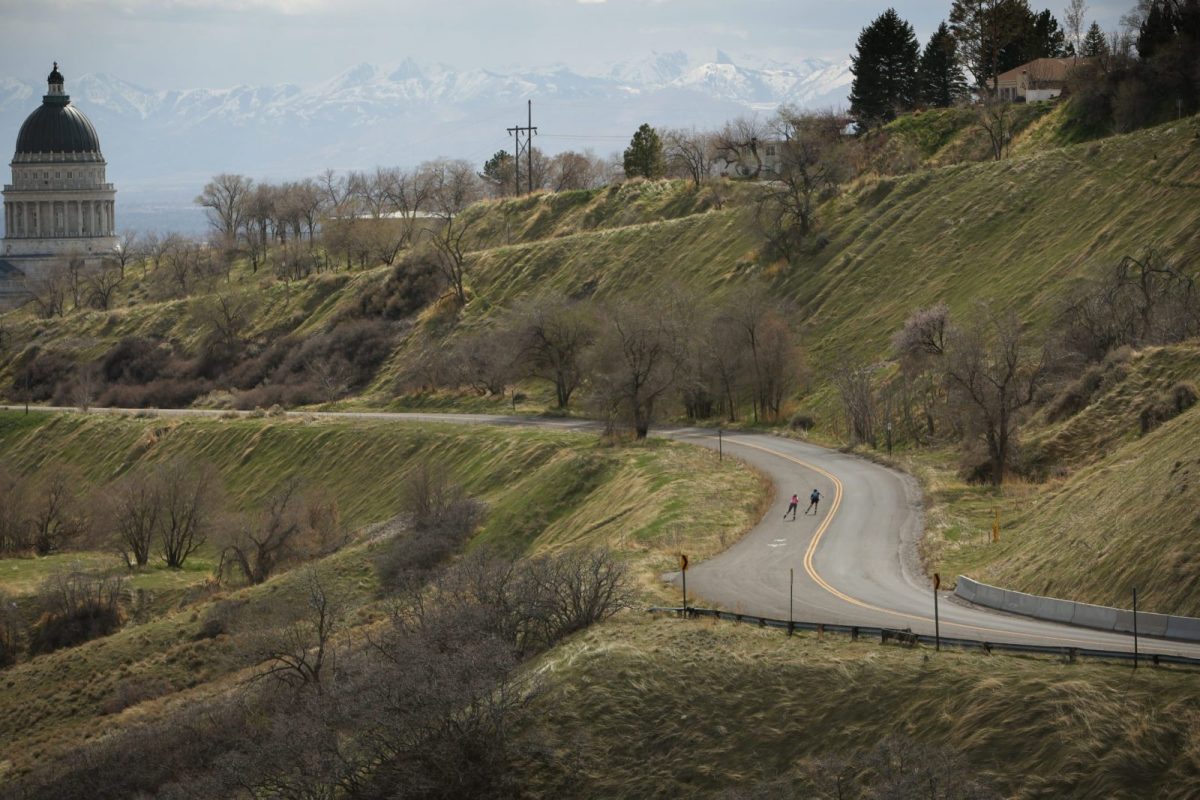On a sunny spring day in late March I was pedaling to the store on the local bike path in Jackson when two Pit Viper-clad dudes in their late 20s flew by me on inline skates. Haven’t seen that in a while, I thought, flashing back to middle school days wreaking havoc around the cul de sac in my skates.
Just a few days earlier, Jackson Hole Mountain Resort had joined the rest of the country in shutting down lift operations for the season due to the COVID-19 outbreak. Grappling with the fact that the next few months would not be filled with tailgate beers in ski boots, I’d be lying if I said I wasn’t in a pretty foul mood. But watching these guys haul down the bike path with smiles that are usually reserved for 10-inch storm days and free breakfast burritos, I saw a glimmer of hope for the coming spring months.
With spring turns off the table, some (overwhelmingly productive folk) are finding solace in house projects and home workout videos. Others are watching re-screens of old ski movies or engaging in Instagram push up challenges (please stop tagging me). A massive amount of skiers, however, are inline skating.

Tom Hyser, Product Marketing Manager at Rollerblade, said that in the last eight weeks, inline skates have seen at least a 300-percent increase in demand. “Ever since the COVID-19 outbreak, we’ve been getting constant calls from retailers asking us to send more skates,” he says. “It’s a great way for people to get outside while still keeping their distance.”
Hyser says the ski community makes up a huge part of the spike in skate sales since it’s such a popular and effective way to cross-train. “A National Canadian Ski Team coach reached out to get skates for their pipe team when resorts closed. Then he called back a few days later to get skis for the slopestyle team.” Rollerblade’s Skate to Ski Program, an off-snow ski training program used by the US Ski Team, PSIA, and the National Ski Patrol, has made the brand popular among skiers looking to stay in shape.
“It has so much cross over strength required for skiing,” says Tommy Biesemeyer, U.S. Ski Team racer who used the Skate to Ski program in his summer training. “My glutes, quads, and low back get crushed when I skate and those three areas are very important for a skier.”
Skating uses similar balance points, engages many of the same muscle groups from skiing, and many moves use the same body position. After recovering from a series of injuries from racing, Biesemeyer turned to inline skating to help him get back on his feet before he was cleared to ski. “It provided repetitive low impact movements that built my strength, creating a strong foundation.”
When Biesemeyer started it was just for training, about 3-5 hours a week. “It wasn’t that cool to go blading with the boys,” he says. “But over the past 10 years it has become more of a thing, and if there’s a good bike path I’ll blade for fun.”
For skiers looking to keep themselves entertained, flying around town on skates provides a taste of that adrenaline rush we crave while we’re not skiing. “I don’t take it super seriously as a training tool,” says professional skier Marcus Caston who’s been skating since he was a kid. “It’s just fun to do and all my skier friends do it in the off season. But you know if I see some good pavement I’ll go make some soul turns.”
John Rushin, Marketing Manager for K2 Skate, says the surge in skate sales during the global pandemic has been massive, but he also attributes it to the revival in 90s culture. The nostalgic appeal of 90s music and style has edged its way back into pop culture in the last few years, and the coronavirus outbreak served as a tipping point for skating. “The 90s are hot again,” he says. “That’s when inline skating really had its heyday. It was only a matter of time for it to come back and we hope we can make it more than a trend or a fad.”

Although it may be tempting to dig out an old pair of skates and go full send around the neighborhood, Hyser recommends selecting terrain wisely if you haven’t been out in a while. “Skiers often approach steeper slopes since that’s what they’re used to on their skis,” Hyser says. “But you quickly find yourself going much faster than you’d expect, and it can be tough to stop when you’re flying down hill.” Hyser advises to start out on flat, even ground like a tennis court or parking lot, before venturing onto potentially crowded bike paths and streets.
It’s easy to laugh at inline skaters zipping through cyclists and joggers on the bike path with their knee and elbow pads. I’ve definitely judged. But now I’m starting to think that was maybe just jealousy all along. Because joke’s on us. Skaters are having the most fun out there—and it’s contagious.
This article originally appeared on Powder.com and was republished with permission.
from Men's Journal https://ift.tt/3bTv7He
No comments:
Post a Comment